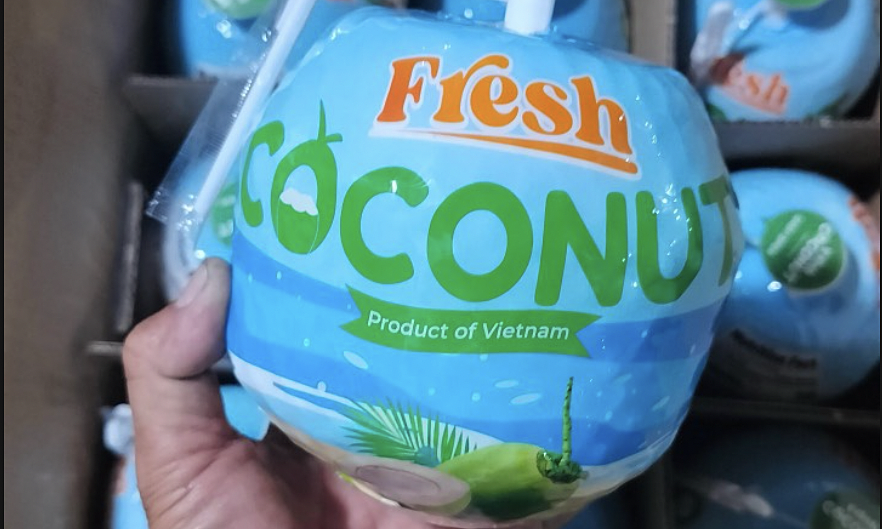In the first 7 months of this year, Vietnam's coconut exports generated over 306 million USD, a 40% increase compared to the same period in 2024. Notably, the US surpassed China for the first time, importing approximately 82 million USD worth of coconuts, double the amount from the same period last year. This accounts for nearly 27% of Vietnam's total coconut export revenue, making the US the largest market.
In July alone, the US imported over 14 million USD worth of coconuts, a more than 2.3-fold increase compared to last year. This surge is attributed to the strong demand from retail chains and the beverage industry, where Vietnamese fresh coconuts are gaining popularity.
Conversely, China, a long-standing top importer, experienced only a slight increase to nearly 67 million USD over the 7 months. This resulted in a decrease in market share to approximately 22%.
Beyond these two primary markets, several other destinations also recorded impressive growth. Exports to Australia increased by over 77%, to the UAE doubled, to Spain more than doubled, and to Puerto Rico surged nearly eightfold. Cambodia also emerged as a significant market, with an astounding 690-fold increase. In contrast, exports to Thailand and South Korea declined sharply.
Nguyen Dinh Tung, CEO of Vina T&T, stated that his company exports about 80-90 containers of fruit to the US by sea and an additional 60-70 tons by air each month, with coconuts making up a significant portion.
"Orders remain stable, and purchasing power is maintained at a good level as coconuts are considered an essential commodity. To date, exports to the US have increased by about 25% compared to the same period in 2024, and have not been significantly affected by monetary policies or retaliatory tariffs," he said.
According to Dang Phuc Nguyen, General Secretary of Vinafruit, the demand for coconuts in the US, China, and Middle Eastern markets has increased significantly. Coupled with the limited global supply, this has made Vietnamese coconut prices increasingly competitive. Since 2023, when the US opened its market to Vietnamese fresh coconuts, domestic businesses have rapidly expanded their market reach, diversified their product range, and improved packaging quality, giving Vietnamese goods a distinct advantage.
 |
Vietnamese coconuts packaged for export to the US. Photo: Vina T&T |
Vietnamese coconuts packaged for export to the US. Photo: Vina T&T
To meet the growing demand, Vietnam has also been importing coconuts for processing. Over the past 7 months, import turnover reached over 31 million USD, 20 times higher than the same period last year. The majority of the supply comes from Indonesia, in addition to exploring new partnerships in Papua New Guinea, although trade there remains limited due to the lack of a formal agreement.
In the domestic market, coconut prices in the first half of the year fluctuated between 18,500 and 19,000 dong per fruit, the highest ever recorded. Retail prices for premium coconuts reached 25,000 dong, six times higher than 4 years ago. This is primarily due to drought and salinity in the Mekong Delta and diseases in central Vietnam, which reduced output. High prices have brought significant profits to farmers, encouraging them to expand their cultivation areas. This has increased the total coconut cultivation area nationwide to over 200,000 hectares, with an output of approximately 2 million tons annually.
The number of coconut processing factories has also increased rapidly, from 8 in 2015 to 45 in 2024, with the participation of many large enterprises. However, the cultivated area and productivity have not kept pace with this expansion, creating intense competition for raw materials. The Vietnam Coconut Association advises farmers to choose varieties suitable for export demand to avoid the risk of local surpluses when the market fluctuates.
Thi Ha












